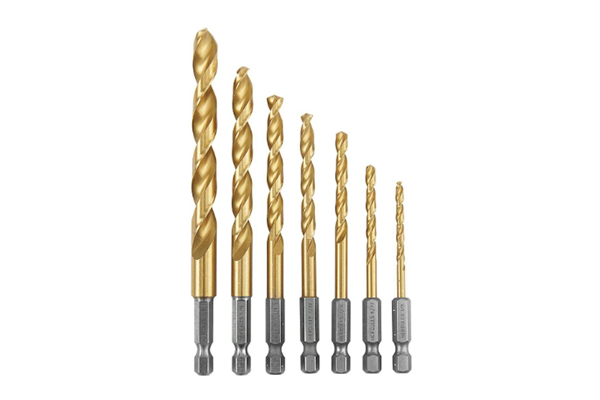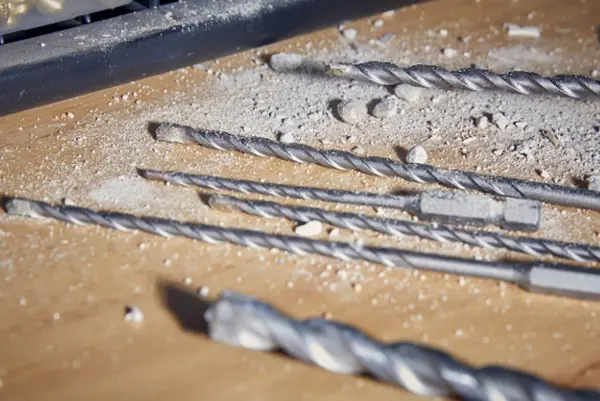Are you gearing up for your next DIY project or tackling a professional job? Understanding the different types of drills and drill bits, especially the versatile hex shank drill bit, is crucial for success. This comprehensive guide will walk you through everything from choosing the right drill bit for the job to mastering the use hex and hex shank drill techniques. We’ll dive deep into drill types, chuck mechanisms, and the advantages of hex shanks, ensuring you're equipped with the knowledge to handle any drilling task. This article is worth reading because it empowers you to choose the right tools and techniques, saving you time, money, and frustration.
1. What Are the Different Types of Drills and How Do They Work?
The drill is a fundamental tool in any toolkit, but understanding the different types is essential. The most common types are:
- Handheld Drills: These are portable and versatile, perfect for a variety of projects. They come in corded and cordless versions. A hand held drill is a great option for small home tasks.
- Drill Press: This is a stationary drill that provides more precision and power. A drill press is ideal for repetitive tasks and projects requiring accurate hole placement.
- Impact Driver: While technically not a drill, the impact driver is often used with drill bits, especially for driving screws. An impact driver delivers a rotational hammering action, making it ideal for higher torque applications.
Each type of drill uses a chuck, which is the mechanism that holds the drill bit in place. Most chucks are either keyless or keyed, with keyless chucks being easier to use.

2. What is a Drill Bit? Different Types of Drill Bits
A drill bit is a rotating cutting tool used to create holes in various materials. The design of a drill bit depends on the material it's intended to cut. Here's a breakdown of some common drill bit types:
- Twist Bits: These are the most common type of drill bit. They are used for drilling into wood, metal, and plastic. Twist bits are often made from high-speed steel (HSS).
- Masonry Bits: Designed for drilling into concrete, brick, and stone, masonry bits have a carbide tip for durability.
- Wood Bits: These include spade bits and forstner drill bits. Spade bits are used for drilling large, flat-bottomed holes, while forstner drill bits are used for creating clean, precise holes.
- Hole Saws: These are used to cut large-diameter holes. Hole saws are useful for installing electrical boxes or running pipes.
- Step Bits: These drill bits allow you to drill multiple-sized holes with a single bit. They are often used for sheet metal.
- Countersink Bits: These are designed to create a countersunk hole, allowing the head of a screw or bolt to sit flush with the surface.
The choice of drill bit is critical for the success of your project. Using the wrong drill bit can damage your materials and make the job harder.
3. What Are Hex Shank Drill Bits and Why Use Them?
A hex shank drill bit has a hexagonal-shaped shank. This is a significant design feature that offers several advantages:
- Secure Grip: The hexagonal-shaped drill bit shank provides a secure grip in the chuck, preventing the bit from slipping. This is especially important when using an impact driver.
- Quick Change: Hex shank drill bits are designed for quick-change chuck systems, making it fast and easy to swap bits. This is incredibly convenient.
- Compatibility: Hex shank drill bits can be used in both drills and impact drivers, making them a versatile choice.
- Torque Transfer: The hex bit is a way better method to increase the ability to use more force while working in a drill.
When you need to drill, the hex shank drill bit is a great option. It's a favorite choice of many people use. They're also easy to identify, as they hold a hex, they look different from regular shanked drill bits.
4. Comparing Hex Shank Drill Bits with Regular Drill Bits
The primary difference between a hex shank drill bit and regular drill bits lies in the shank design. Regular drill bits, also known as round shank bits, have a cylindrical shank that fits into a standard drill chuck. A hex shank drill bit, with its hexagonal shank, offers a better grip and allows for quick changes. The regular chuck often doesn't have a way to securely hold a hex bit.
| Feature | Hex Shank Drill Bit | Regular Drill Bit |
|---|---|---|
| Shank Shape | Hexagonal | Round |
| Grip | Superior, prevents slipping | Good, but can slip in high-torque situations |
| Quick Change | Compatible with quick-change chucks | Requires traditional chuck tightening |
| Compatibility | Works with drills and impact drivers | Primarily works with drills |
| Torque Transfer | Better torque transfer | Good torque transfer |
While regular drill bits are perfectly adequate for many tasks, the added grip and quick-change capabilities of a hex shank drill bit make them a superior choice for certain applications. Also, when you need to drill a hole or holes, and want to save the day, it's an important feature.
5. How to Choose the Right Drill Chuck
The chuck is a crucial component of the drill, as it holds the drill bit firmly in place. There are two main types of chucks:
- Keyed Chucks: These chucks require a special key to tighten and loosen the jaws. They are generally more robust and can provide a tighter grip on the drill bit.
- Keyless Chucks: These chucks can be tightened and loosened by hand. They offer convenience, allowing for quick bit changes without the need for a key.
When choosing a chuck, consider the size range it can accommodate. Ensure the chuck can hold the diameter of the drill bits you plan to use. A quality chuck is essential for safe and efficient drilling. Also, a 3 jaw is often used to provide a stable grip.
6. How to Use a Hex Shank Drill Bit Correctly
Using a hex shank drill bit correctly ensures optimal performance and safety. Here's a step-by-step guide:
- Choose the Right Bit: Select the appropriate drill bit size and type for the material you are need to drill.
- Insert the Bit: Place the hex shank drill bit into the drill chuck or quick-change chuck.
- Secure the Bit: If using a drill chuck, tighten it firmly around the hex shank drill bit. If using a quick-change chuck, ensure the bit is securely locked in place.
- Position the Drill: Place the drill bit at the point where you need to drill the hole or holes.
- Start Drilling: Apply steady pressure and maintain a consistent speed. Let the drill do the work.
- Avoid Overheating: If you're drilling into metal, apply cutting oil to prevent the drill bit from overheating.
- Remove Debris: Periodically remove the drill from the hole to clear away debris.
Always remember to wear safety glasses when drilling to protect your eyes from flying debris.
7. Using a Hex Shank Drill Bit with an Impact Driver
One of the major advantages of a hex shank drill bit is its compatibility with an impact driver. Here’s how to use a hex shank drill in your impact driver:
- Insert the Bit: Simply insert the hex shank drill bit into the impact driver's quick-change chuck.
- Lock the Bit: Ensure the bit is securely locked in place. Most impact drivers have a mechanism that automatically locks the bit.
- Start Drilling: Apply the impact driver to the material, maintaining a firm grip. The impact action will provide extra power.
- Control the Torque: Impact drivers offer adjustable torque settings. Start with a lower setting and increase it as needed.
The combination of a hex shank drill bit and an impact driver is perfect for driving screws and drilling in tough materials where higher torque applications are needed. This can allow you to drill with more ease.
8. What Are Drilling Accessories?
Drilling accessories can significantly enhance your drilling experience, making your projects more efficient and professional. Some essential drilling accessories include:
- Drill Bit Sets: A comprehensive set of drill bits ensures you have the right size and type for any job.
- Countersinks: These create a countersunk hole for flush screw installation.
- Hole Saws: Essential for cutting large holes.
- Drill Guides: These help you drill straight holes, especially in challenging situations.
- Adapters: These allow you to use different shanked drill bits with your drill or drill press. An adapter may be useful if your drill can't accept a hex bit.
These drilling accessories can save the day and improve the quality and speed of your work.
9. Safety Tips for Using Drills and Drill Bits
Safety should always be your top priority when using drills and drill bits. Here are some important safety tips:
- Wear Safety Glasses: Protect your eyes from flying debris.
- Use the Right Bit: Select the appropriate drill bit for the material.
- Secure the Material: Clamp the material to prevent it from moving during drilling.
- Maintain Control: Keep a firm grip on the drill and maintain control throughout the drilling process.
- Unplug Before Changing Bits: Always unplug a corded drill or remove the battery from a cordless drill before changing drill bits.
- Avoid Overheating: If drilling into metal, use cutting oil to prevent overheating.
- Be Aware of Your Surroundings: Make sure your work area is clear of obstructions.
- Use the Correct Torque: Adjust the torque settings on your drill or impact driver to match the task.
Following these safety guidelines will help you avoid accidents and ensure a safe and successful project. Always keep in mind that javascript is disabled is a common cause of injuries.

10. Where Can You Buy Quality Drill Bits and Drilling Accessories?
Finding the right quality drill bits and drilling accessories is crucial for the success of your projects. Here are some reliable sources:
- Hardware Stores: Local hardware stores offer a wide range of drill bits and accessories.
- Home Improvement Centers: Large home improvement centers offer a comprehensive selection of drilling accessories.
- Online Retailers: Online retailers provide a vast selection of drill bits and accessories at competitive prices. You might be wondering where to buy these, and many people use online resources for this.
- Specialty Tool Stores: These stores specialize in high-quality tools and offer expert advice.
When purchasing drill bits, consider the materials they are made from. HSS bits (high-speed steel) are a good general-purpose option, while carbide-tipped bits are best for hard materials. Always read drill bits are made from quality materials. It is important to buy quality bits and quality drill bits will last longer and perform better, giving you peace of mind.
Summary:
- Choose the Right Drill Bit: Select the appropriate drill bit type and size for the material and hole size.
- Understand Drill Types: Know the differences between handheld drills, drill presses, and impact drivers.
- Hex Shank Advantages: Appreciate the benefits of a hex shank drill bit for secure grip, quick changes, and compatibility.
- Safety First: Always wear safety glasses and follow safety guidelines.
- Invest in Quality: Purchase quality drill bits and drilling accessories for optimal performance and durability.
By following this comprehensive guide, you’ll be well-equipped to tackle any drilling project with confidence and precision. Remember to prioritize safety, choose the right tools, and enjoy the process!
Looking for reliable Self-Drilling Anchor Systems and Drilling Tools?
- Explore our Self-drilling Hollow Anchor solutions.
- Discover our range of Rock Drilling Bits for various applications.
- Find high-quality Tapered drill pipe for your construction needs.
Post time: 2 月-18-2025














